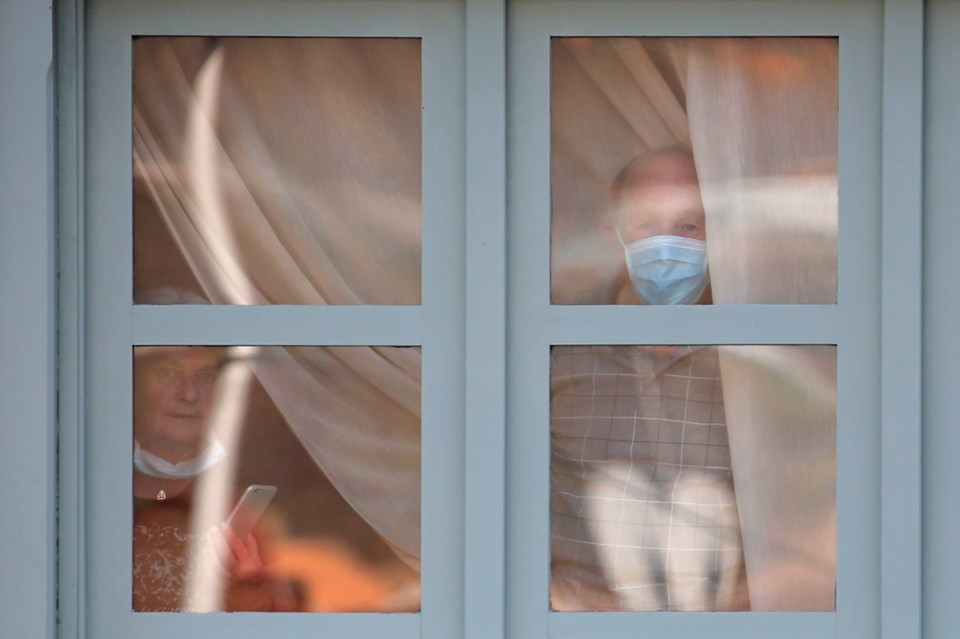As I write this, nearly 60 countries have cases of COVID-19, there have been greater than 83,000 cases reported and more than 2,800 deaths. About 36,000 people are reported to have recovered. This is a pandemic infectious disease.
How different is today’s new coronavirus compared with the coronavirus causing SARS in 2003, 17 years ago?
In 2003, we were lucky in British Columbia because of the alert that was put out by the B.C. Centre for Disease Control to hospitals, to isolate anyone that was arriving at Vancouver International Airport from Hong Kong who was sick with an unusual pneumonia that was occurring in China.
This was even before SARS had been identified as the cause.
In contrast, in Toronto the epidemic became uncontrolled as the index case did not have a travel history but he had been in contact with his mother, who after arriving from Hong Kong had died at home from SARS.
SARS was contained worldwide and there is no evidence currently that that coronavirus exists in the human population.
What is different this time? The difference is that COVID-19 is more infectious. It spreads more easily from person to person. It is more infectious than the influenza virus where one person infects an average of 1.28 people. It has been estimated that an individual with COVID-19 virus will infect between 1.4 and 2.5 people.
As the new COVID-19 spreads around the world, we are learning that crowding (such as containing people on cruise ships, at meetings or in camps) increases the spread of this virus. Isolation at home as one should do with any “cold” or influenza-like illness is the best public health measure.
Hospitals should only admit people who are seriously ill and needing hospital care. We know that many infections spread in hospitals. It is likely that in Wuhan, China, the crowding of people into an overwhelmed health-care system will have increased the spread of the COVID-19 virus.
In 1918, during the Spanish Influenza pandemic, the spread of and deaths from that infectious disease was particularly high when troops returning from the First World War were crowded on ships and in camps.
From what is known today, those who get seriously ill or die from COVID-19 are the frail elderly or those who have pre-existing chronic health conditions. These are the people that when they become seriously ill, need hospitalization and treatment in isolation, with whatever antiviral drugs that are going to be shown to be effective.
It seems likely, at least in Western countries with good hospital care systems, that the mortality (death) rate will be lower than that being experienced in Wuhan, China, at this time.
The evidence today is that this new COVID-19 virus will be like the common cold, a mild illness in at least 80% of people.
There are about 200 viruses that cause the common cold. They include the rhinovirus, a picornavirus, the coronaviruses, influenza viruses, adenovirus, human respiratory syncytial virus, enteroviruses etc. Only a few people get seriously sick after the common cold.
COVID-19, even though more infectious, will not be as serious an illness as influenza, which has been estimated to cause the death of 646,000 people worldwide each year.
The racism and xenophobia that is occurring throughout the world is predictable and has been known for centuries during public health pandemics. Think of what happened during the Black Death in Europe in the 14th to 17th centuries when quarantine measures were first developed and communities isolated themselves before it was determined that fleas carried by rats were spreading the plague bacteria.
The challenge for public health and for politicians now is to change the message and move away from quarantining sick people in crowded situations to isolation at home, as is happening here in British Columbia.
China is learning that it cannot control the spread of this highly infectious COVID-19 virus by trying to control the movement of people.
Other countries will need to learn how to adapt to the realities of the spread of COVID-19, which will most likely become endemic (meaning occurring commonly) in the population.
We are all going to have to learn how to live with a new virus that, for most healthy people, will not be worse than the common cold.
Dr. Shaun Peck was the deputy provincial health officer from 1995 to 2004. He was involved in the public health response to SARS in 2003.



